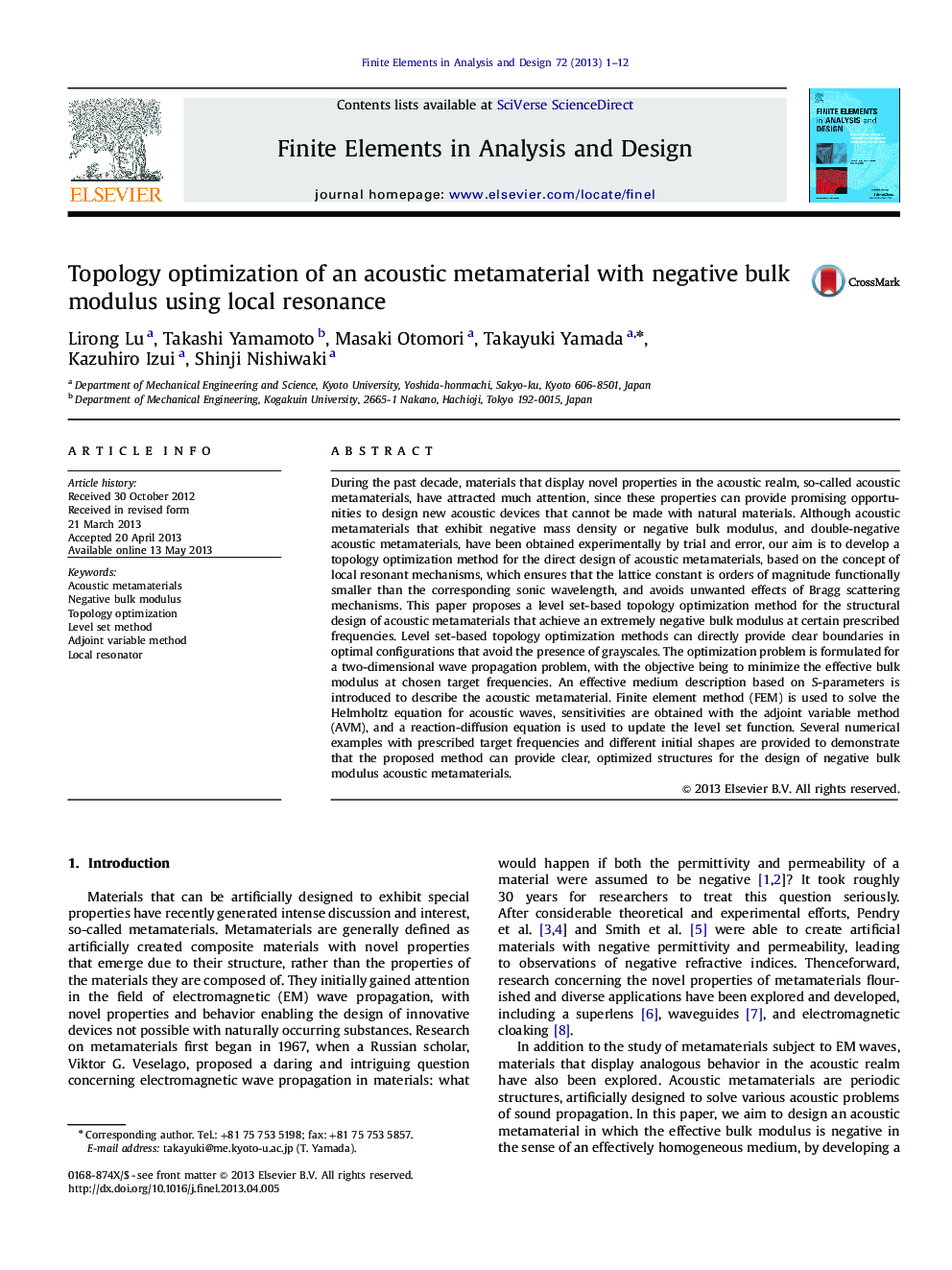| Article ID | Journal | Published Year | Pages | File Type |
|---|---|---|---|---|
| 513849 | Finite Elements in Analysis and Design | 2013 | 12 Pages |
•We propose a level set-based topology optimization to design acoustic metamaterials using the Finite Element Method.•We formulate the optimization problem using effective material properties.•A two-step optimization process enabled to handle the design of effective bulk modulus.•In all examples we successfully obtain optimized shapes with negative bulk modulus.
During the past decade, materials that display novel properties in the acoustic realm, so-called acoustic metamaterials, have attracted much attention, since these properties can provide promising opportunities to design new acoustic devices that cannot be made with natural materials. Although acoustic metamaterials that exhibit negative mass density or negative bulk modulus, and double-negative acoustic metamaterials, have been obtained experimentally by trial and error, our aim is to develop a topology optimization method for the direct design of acoustic metamaterials, based on the concept of local resonant mechanisms, which ensures that the lattice constant is orders of magnitude functionally smaller than the corresponding sonic wavelength, and avoids unwanted effects of Bragg scattering mechanisms. This paper proposes a level set-based topology optimization method for the structural design of acoustic metamaterials that achieve an extremely negative bulk modulus at certain prescribed frequencies. Level set-based topology optimization methods can directly provide clear boundaries in optimal configurations that avoid the presence of grayscales. The optimization problem is formulated for a two-dimensional wave propagation problem, with the objective being to minimize the effective bulk modulus at chosen target frequencies. An effective medium description based on S-parameters is introduced to describe the acoustic metamaterial. Finite element method (FEM) is used to solve the Helmholtz equation for acoustic waves, sensitivities are obtained with the adjoint variable method (AVM), and a reaction-diffusion equation is used to update the level set function. Several numerical examples with prescribed target frequencies and different initial shapes are provided to demonstrate that the proposed method can provide clear, optimized structures for the design of negative bulk modulus acoustic metamaterials.
